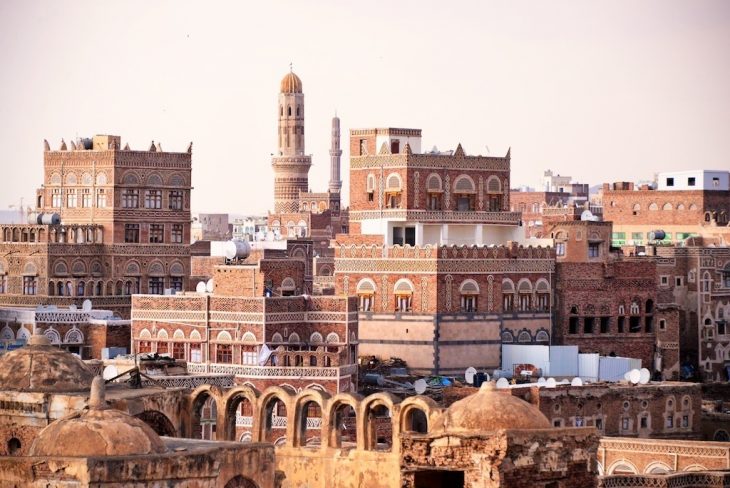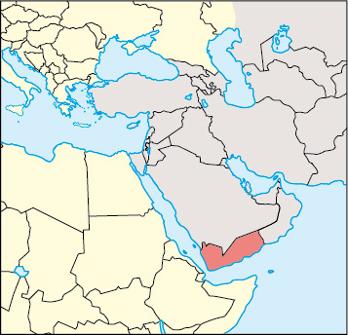What is the Capital of Yemen? Sanaa

Capital City of Yemen: Sana’a
City Overview
Sana’a, the capital of Yemen, is one of the oldest continuously inhabited cities in the world, with a history that spans over 2,500 years. Situated in the western part of the country, Sana’a lies at an elevation of about 2,200 meters (7,200 feet) above sea level in the Yemeni Highlands. Its unique topography and high altitude give it a relatively moderate climate compared to other regions in the Arabian Peninsula, which is otherwise known for its extreme heat and aridity.
Sana’a has been a prominent center for trade, culture, and religion throughout its long history. The city is an integral part of Yemen’s national identity and has been the country’s capital for centuries. The city is famed for its rich cultural heritage, ancient architecture, and significant Islamic history. The Old City of Sana’a is a UNESCO World Heritage Site, showcasing buildings made of mudbrick and decorated with intricate designs, some of which date back as far as the 7th century.
In addition to its historical significance, Sana’a serves as Yemen’s political and administrative center. The city hosts most of Yemen’s government institutions, ministries, and foreign embassies, even though it remains embroiled in the ongoing conflict in Yemen, which has affected many aspects of daily life.
Key Facts about Sana’a:
- Area: 126 square kilometers (49 square miles)
- Population: Approximately 2 million people (2023 estimate)
- Time Zone: Arabian Standard Time (UTC +3)
- Highest Mountain: Jabal al-Nabi Shu’ayb (3,666 meters / 12,027 feet)
- Longest River: Wadi Hadramaut
Despite the challenges posed by war and instability, Sana’a is an enduring symbol of Yemen’s history, culture, and resilience.
Major Landmarks in Sana’a
Sana’a is home to numerous landmarks that represent its historical depth and cultural significance. These landmarks include ancient mosques, traditional architecture, and notable markets, which continue to attract visitors despite the region’s difficulties.
1. The Old City of Sana’a
The Old City of Sana’a is undoubtedly the most iconic landmark. It is known for its unique multi-story mudbrick houses, often adorned with geometric patterns. These buildings are designed to keep the homes cool in summer and warm in winter, showcasing traditional Yemeni engineering techniques. The Old City was designated as a UNESCO World Heritage Site in 1986 due to its historical value and the preservation of its medieval architecture. The narrow streets, traditional souks (markets), and ancient mosques add to the charm and historical atmosphere of this district.
2. Great Mosque of Sana’a
The Great Mosque of Sana’a, also known as Al-Jami’ al-Kabir, is one of the oldest mosques in the Arabian Peninsula. It was established during the reign of the Zaydi Imams in the 7th century and holds religious significance for Muslims. The mosque features beautiful architecture and Islamic design, with intricately carved wooden doors and columns. It has been a center for learning and worship for over a millennium.
3. Al Saleh Mosque
The Al Saleh Mosque is a more modern structure, completed in 2008. It was built during the presidency of Ali Abdullah Saleh, and its grandeur makes it one of the largest mosques in the Arab world. The mosque features vast courtyards, high minarets, and an impressive dome. It can accommodate thousands of worshippers and remains a place for both prayer and national events.
4. Bab al-Yemen
Bab al-Yemen, which means “Gate of Yemen,” is a historic entrance to the Old City. The gate has been an important symbol of Sana’a and its role as a cultural and commercial hub. It dates back to the 15th century and has been renovated multiple times. The gate is the centerpiece of a bustling market area, where visitors can experience traditional Yemeni life.
5. Sana’a National Museum
The Sana’a National Museum is the country’s largest museum and houses an extensive collection of artifacts from Yemen’s ancient and Islamic history. The museum showcases prehistoric tools, ancient Sabaean inscriptions, and Islamic manuscripts. It offers valuable insight into Yemen’s diverse cultural heritage, including objects from the Himyarite, Sabaean, and Islamic periods.
Climate Overview of Sana’a
Sana’a experiences a mild and temperate climate, which sets it apart from many other cities in Yemen that suffer from extreme desert heat. Its location in the Yemeni Highlands at an elevation of over 2,000 meters (6,600 feet) above sea level means that it is cooler than much of the surrounding country. The temperature can range from warm during the day to cooler at night, especially in the winter months.
Summers are relatively warm, but due to the altitude, temperatures rarely exceed 30°C (86°F). In contrast, winters are cool, with temperatures often dipping to 15°C (59°F) at night. Rainfall is sparse, and the city is mostly sunny year-round. Despite this, the cooler mountain air provides a refreshing contrast to the typical desert heat found in much of the Arabian Peninsula.
Monthly Climate Overview
| Month | Average Temperature (°C) | Average Precipitation (mm) | Sunny Days |
|---|---|---|---|
| January | 15 – 22 | 25 | 20 |
| February | 16 – 23 | 20 | 22 |
| March | 18 – 25 | 18 | 24 |
| April | 20 – 28 | 10 | 26 |
| May | 22 – 30 | 5 | 28 |
| June | 23 – 31 | 0 | 30 |
| July | 23 – 31 | 0 | 30 |
| August | 22 – 30 | 5 | 29 |
| September | 20 – 28 | 12 | 27 |
| October | 18 – 26 | 18 | 25 |
| November | 16 – 24 | 20 | 23 |
| December | 15 – 22 | 25 | 20 |
Other Historical Capitals of Yemen
Throughout Yemen’s long history, multiple cities have served as its capital, each playing a critical role in the development of the country’s political and cultural identity.
1. Ma’rib (Pre-Islamic Period)
- Period: 1200 BCE – 7th Century CE
Ma’rib was the capital of the Sabaean Kingdom, one of the most prosperous civilizations in pre-Islamic Yemen. Located in the eastern part of the country, Ma’rib was famous for the Ma’rib Dam, an ancient engineering marvel that helped sustain agriculture in the region. The city played a significant role in the trade of frankincense, myrrh, and other valuable goods, contributing to the kingdom’s wealth. Today, Ma’rib is mostly an archaeological site, but it remains a symbol of ancient Yemeni ingenuity.
2. Zabid (Islamic Period)
- Period: 9th Century – 14th Century
Zabid, located in western Yemen, was once the capital of the Rasulid Sultanate and a prominent center for Islamic learning. During the medieval period, Zabid was known for its universities and scholars, attracting students from across the Islamic world. The city also flourished as a center of trade and culture. Today, Zabid is a UNESCO World Heritage Site, preserving many historical buildings and monuments that showcase its Islamic heritage.
3. Aden (Modern Period)
- Period: 1839-1967 (British Colony); briefly after unification
Aden, located on Yemen’s southern coast, served as a key port and was under British control from 1839 until 1967, when it became part of the newly established People’s Democratic Republic of Yemen. During British rule, Aden developed into a major commercial hub. After Yemen’s unification in 1990, Aden briefly became the interim capital until Sana’a became the permanent capital of the newly unified state.
Country Facts: Yemen
Yemen, located at the southern tip of the Arabian Peninsula, has a rich cultural and historical heritage. Despite facing modern challenges, including civil war and humanitarian crises, Yemen remains an important player in the history of the Arabian Peninsula.
Key Facts about Yemen:
- Population: Approximately 33 million (2023 estimate)
- Area: 527,968 square kilometers (203,850 square miles)
- Largest City: Sana’a
- Currency: Yemeni rial (YER)
- Official Language: Arabic
- ISO Country Codes: YE (Alpha-2), YEM (Alpha-3), 887 (Numeric)
- Government: Unitary presidential republic (Currently embroiled in civil conflict)
- GDP (nominal): Approximately $22 billion (2023 estimate)
Yemen is known for its ancient kingdoms, such as the Sabaeans and Himyarites, whose legacies continue to influence the culture today. The country’s landscape is incredibly diverse, from deserts and mountains to lush valleys and coastal plains. Despite the ongoing challenges, Yemen is a country of great historical and cultural significance, with its cities, including Sana’a, continuing to embody the nation’s resilience and rich heritage.














































